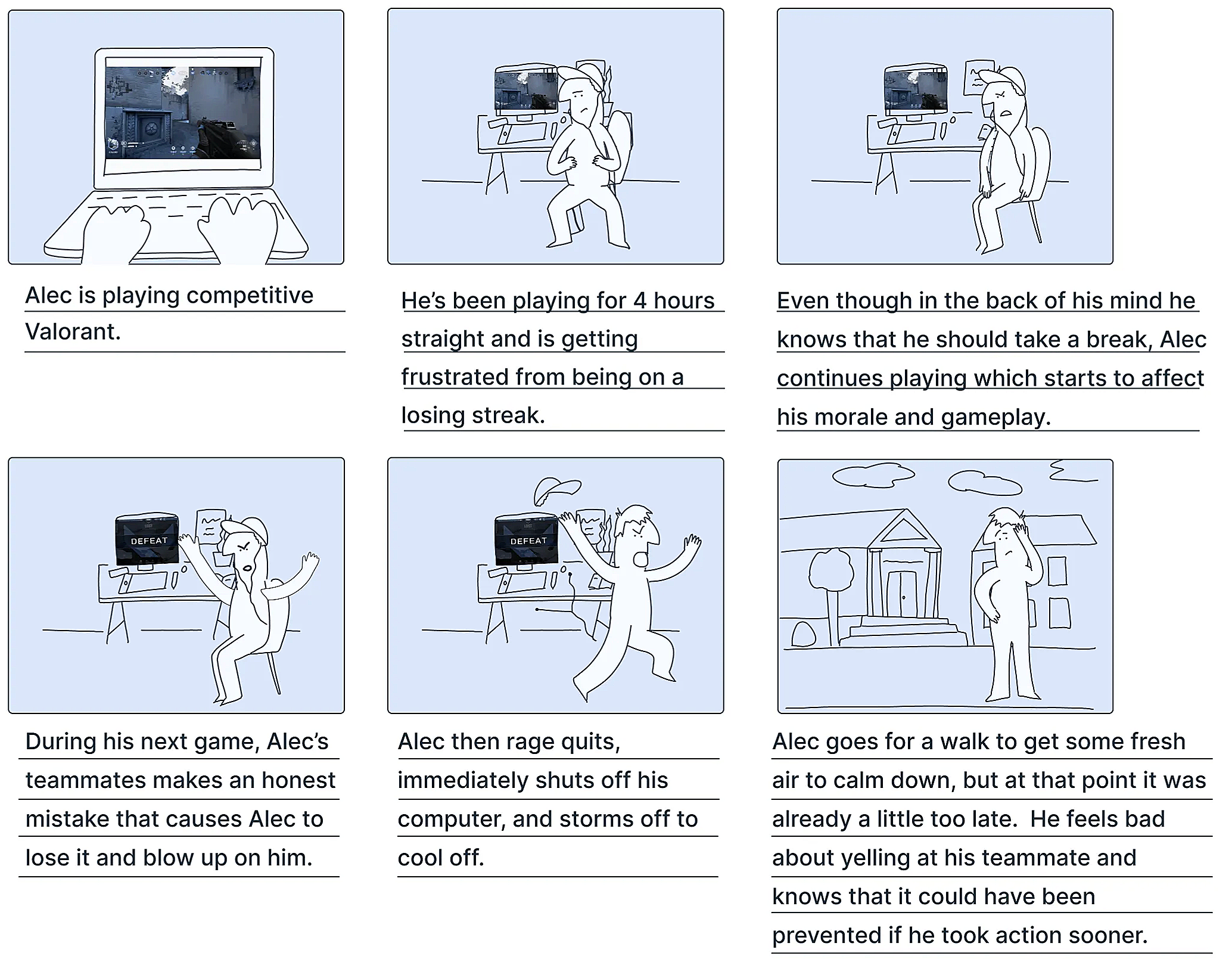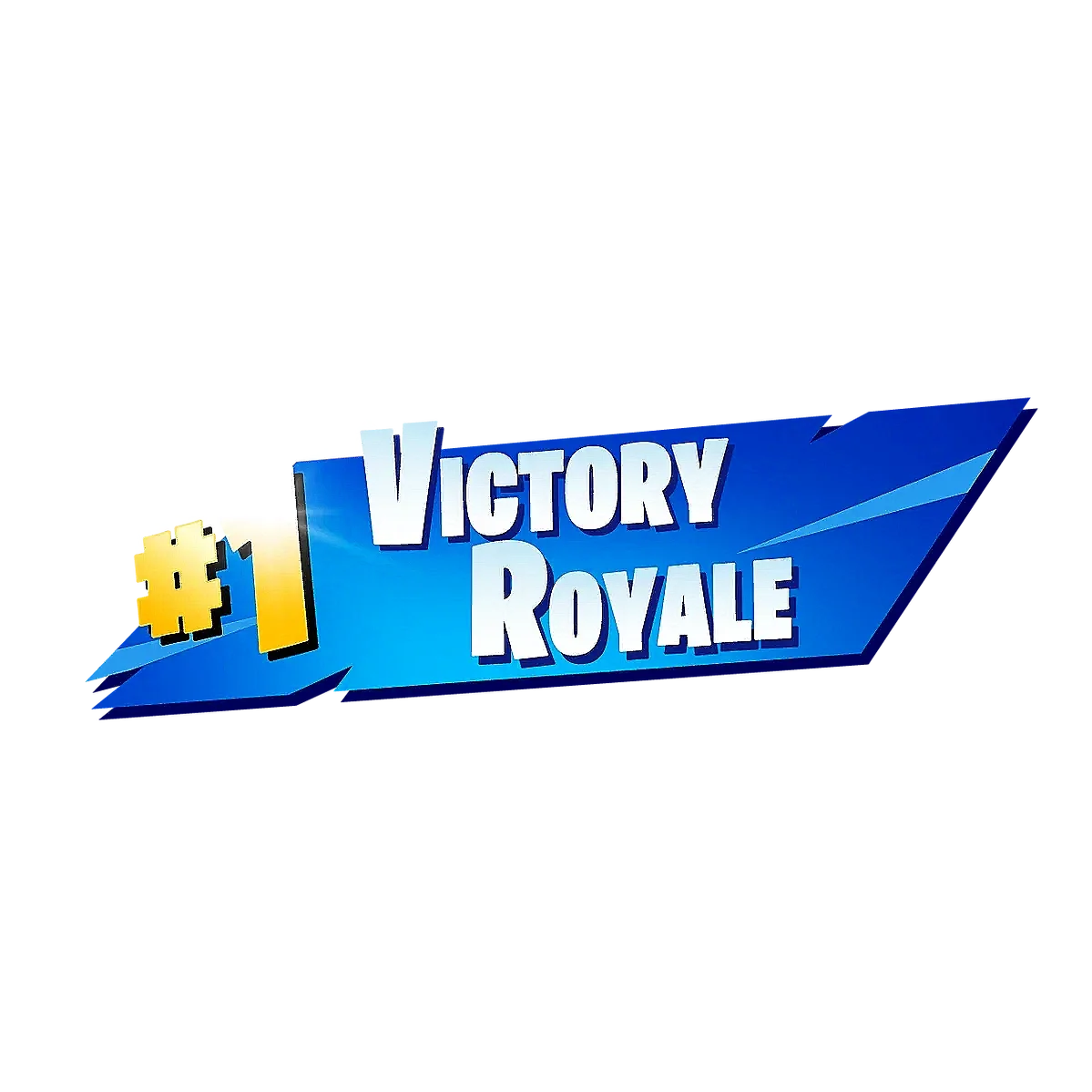Designing a Mobile Solution that Promotes Mindful Gaming and Overall Wellbeing
In this day and age, video games play a huge role in many people’s lives. Whether it be from playing professionally or as a way to wind down to conclude your day. With so many people playing, some play for too long. Because of this issue, the challenge was to create a wellness application catered to the gaming audience to help them find a balance between their gaming sessions and to “Go Touch Grass”.
Overview
Gamers are known for their unhealthy habits; not exercising, playing for periods that are considered too much, and the decline of a positive mind when they are doing poorly are some of the many issues. The challenge was to create an application that would help them be more conscious about their gaming habits and ultimately lead them towards that consistent healthy lifestyle.
Problem & Challenge
Research began by looking for articles that would answer initial questions. Those articles were:
Research
Competitor Analysis
Problem Statement
HMW
User Persona
They both highlight the negative and positive effects of taking breaks, too much gaming, and emotions.
Research
Consistent gamers were surveyed based on their gaming sessions, preferences, behaviors, habits, and wants for an application that would help with finding that healthy balance.
Most of those surveyed answered that they play daily, don’t have a specific time for them to take breaks, and they would like a system that monitors; the win/loss ratio, time spent in-game and heart rate.
Because there is no direct competitor for the kind of application we were aiming to make, we decided to compare the capabilities of applications we believed had features that we would like to use. Pokémon Go incentivizes its users to go outside by giving them achievement badges. Both iOS and Instagram give you details regarding the amount of time you spent on your phone and give you a visual representation. The accessibility for these both is also hard to find, we wanted to make sure that we did not have that same issue.
When playing video games for a long period, I want to be able to get smart notifications on when it is a good idea to take a break so I can have a better gaming experience and improve my mental and physical health.
With the results we gathered, we came up with our primary user, Alec Holder. A software engineer that likes to play competitive games in his free time but tends to get upset very quickly when gaming. Some of the pain points were that he doesn’t know when it’s a good idea to take a break from gaming and sometimes he feels that he can be doing other productive things, but feels committed to gaming.
How might we create a system that notifies users when to take a break based on the amount of time they spend in front of the screen?
Story Board
Journey Map
We created a storyboard that would highlight the exact point where we could improve Alec’s experience. The journey we put him through starts with him playing his gaming session for quite some time until he rage quits and blows up on his teammate.
We analyzed Alec’s journey to look into what his goals were through each stage, and how the experience could improve with the implementation of our wellness application. We noticed that the lowest points in the journey are after the “breaking point” when Alec blows upon his teammate and decides to storm off.
Moscow Method
To begin the ideation process, we clarified features, styles, and options that would and would not work well with the application. We agreed that the application must have discord integration to track the gaming sessions and for it to be a simple and quick process, we did not want the user to spend too much time on the application but rather on their gaming session. It should have a user profile, settings page, and proper navigation. Could have an educational section, a win/loss monitor, and overall stats for in-game vs. breaks. The won’t haves were focused on the idea of not having the user on the application too much time, we would do this by not having a lot of information on one page and having a lot of screens they would need to navigate through.
Low-Fi
Keeping in mind what we had put down for the Moscow Method, our Low-Fi iterations demonstrates how the application would be centered around one page. The main page would have a gamified call to action button to start/stop your gaming session and give you reminders as time went on. We added an informative scroll-up page where you would see things like stats, gaming sessions, and educational articles. The settings and profile page could all be accessed from the top corners of the main page.
Mid-Fi
We began transferring over our ideas from drawings to designs and followed the idea of keeping it as simple as possible. The power button would either be turned on automatically through the discord integration or manually and the gaming session would start, indicated by the timer. Once completed, you would be prompted to take a break and not be able to log another gaming session until the break is complete. We focused on creating most of our component assets during this phase to start our testing.
Usability Testing
For our usability tests, we had 5 users go through 7 different tasks. These tasks included accessing the profile and settings page, locating Today’s Stats, and experiencing the gaming session process. No user gave up or had trouble performing what was asked. The other qualitative piece of data we collected was the average time the user spent completing all the tasks which were 1 minute and 16 seconds.
High-Fi
The final product shows all the gamified features come together to create the gamer experience. Making the transition from gaming to your check the application seamless. The power button has a color change that goes from green, yellow, and then red throughout the longevity of the gaming session. All articles would help educate the gamer if they wanted to be more health-conscious and are themed with either game or pro gamers references. The applications break feature lets you know when it is smart to take a break while also giving you stats regarding the game you played. Time to review your gameplay and adjust or just take your mind off the games?
Findings
Users and gamers in particular, are interested in maintaining a healthier balance between games and health but can use some guidance — hence why we created this application.
Gamers like to optimize their time, so we designed our application to fulfill this need. We focused on an experience that requires minimal investment (as seen from our usability tests) while providing plentiful data.
Our initial research findings were crucial to the evolution of our application.
Next Steps
Implement a heart rate monitor system.
Add additional screens to the base of the application to make it fully fleshed out.
Keep iterating the product!
Thank you for taking the time to read my case study. I hope it gave you a clear look into my design process, problem solving approach, and how I bring thoughtful user centered experiences to life. I would love to connect and hear your thoughts or talk more about my work!














